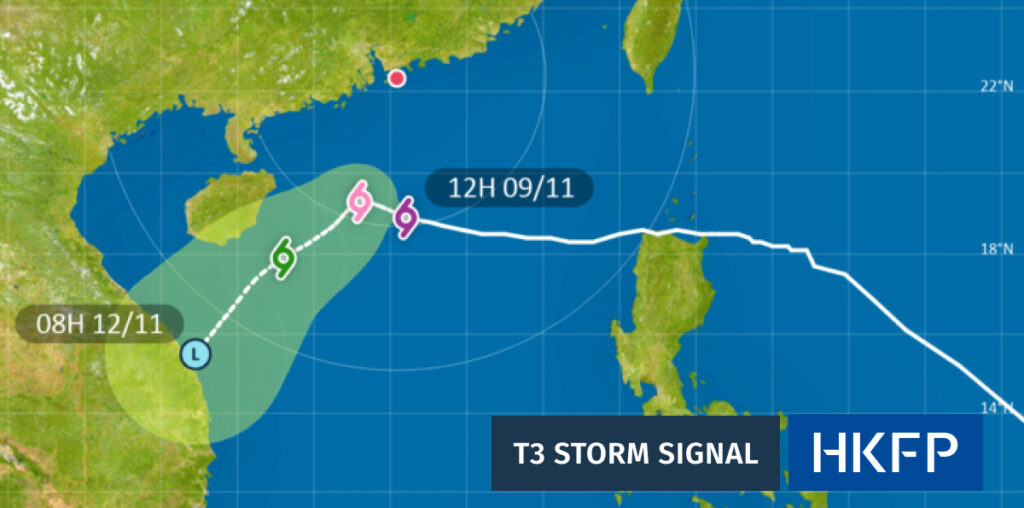The Hong Kong Observatory has issued a T3 storm warning as Super Typhoon Yinxing edged closer to the coast of southern China.

The Strong Wind Signal No. 3 was raised at 3.40 pm on Saturday and was expected to remain in force until at least Sunday morning. “Winds are expected to strengthen gradually, with winds on high ground occasionally reaching gales later,” the Observatory said on Saturday afternoon.
Yinxing was forecast to skirt about 300 kilometres to the south of Hong Kong on Sunday, bringing squally showers and rough seas.
Members of the public were advised to stay away from the shoreline and not engage in water sports. Authorities have this year made efforts to crack down on surfers during inclement weather, with two people “found to have committed the acts of illegal surfing during hoisting of red flags” at Big Wave Bay Beach on October 25.


Secretary for Security Chris Tang last month told the legislature that the Fire Services Department, police and Government Flying Service had been deployed to assist residents engaging in outdoor pursuits while an amber or black rainstorm warning or a T3 or above was in force 24 times between January 1 and September 30.
Three of those deployments were related to “immersion incidents,” while the remaining 21 involved mountain rescue.
Yinxing made landfall in the Philippine island of Luzon on Thursday, prompting the evacuation of more than 160,000 people, according to The New York Times.


Typhoon Signal 3
The No. 3 signal warns of strong winds affecting, or expected to affect, Hong Kong within 12 hours.
- Classes of kindergartens and schools for children with physical or intellectual disabilities will be suspended.
- Scheduled ferry services may be cancelled as conditions worsen. Bus and MTR services are not affected.
- Residents should secure loose objects like flower pots or drying racks, and prepare for possible flooding in low-lying areas.
Climate crisis
Tropical cyclones – which get their energy from warm ocean water – are strengthening and become ever more destructive because of warming seas. Over 90 per cent of excess heat in the atmosphere is ending up in oceans, according to NASA, as rising greenhouse gases prevent it from escaping to space.
Support HKFP | Policies & Ethics | Error/typo? | Contact Us | Newsletter | Transparency & Annual Report | Apps
Help safeguard press freedom & keep HKFP free for all readers by supporting our team


Source link

